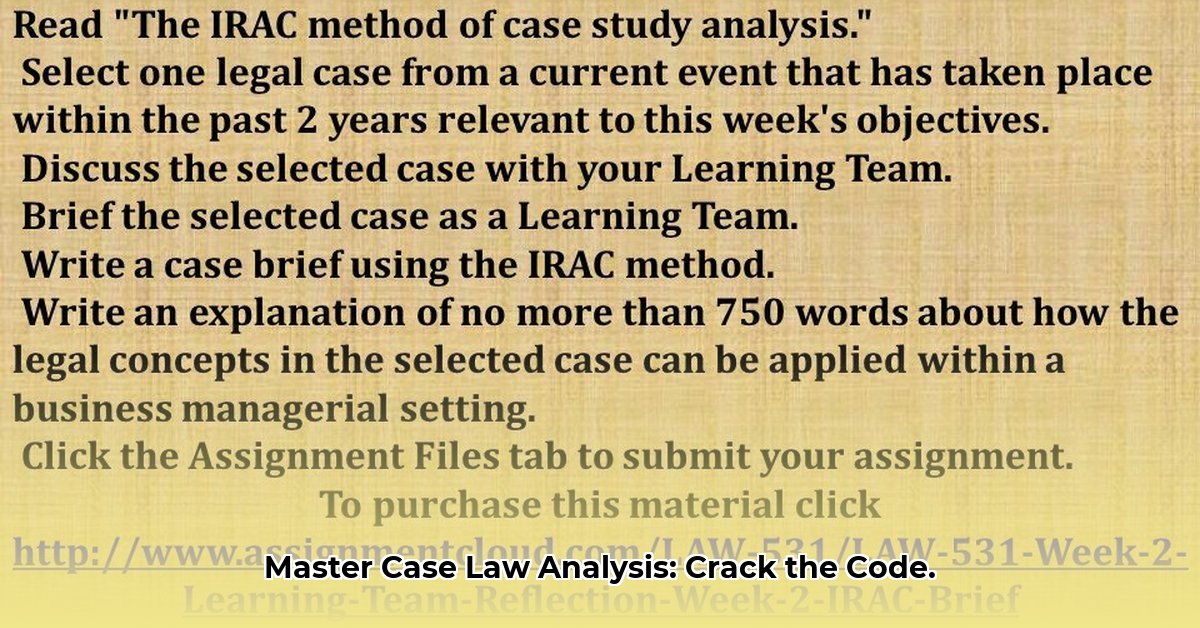
Understanding the Case: Facts and Legal Issues
Before diving into legal jargon, consider the case as a detailed story with a legal twist. Begin by clearly identifying the facts: What events transpired? Who are the parties involved (plaintiffs and defendants)? What are their respective claims? A thorough understanding of these facts forms the bedrock of your analysis. Without a firm grasp of the factual background, your analysis will be inherently weak. Do you understand the sequence of events leading to the litigation, and how those events shaped the legal arguments presented? For further study on the judicial process, see these helpful study questions.
Next, pinpoint the precise legal issues at stake. What specific questions must the court answer to resolve the dispute? These are the central problems demanding resolution, forming the heart of the case and dictating its outcome. Defining these issues accurately is crucial; it provides the roadmap for your entire analysis. A clearly defined legal issue helps steer your research and ensures your analysis remains focused and effective.
Applying the Law: Precedents and Legal Reasoning
Now, we turn to the legal framework: existing laws, statutes, and previous court decisions—precedents. Think of precedents as building blocks, guiding the interpretation and application of the law in the current case. However, not all parts of a precedent carry equal weight.
It's crucial to distinguish between ratio decidendi (the core legal reasoning forming the binding precedent) and obiter dicta (non-binding comments or observations made by the judge). The ratio decidendi dictates how similar cases should be decided in the future, whereas obiter dicta, while insightful, is not legally binding. Understanding this distinction is vital for accurate legal analysis. How effectively you can distinguish between ratio decidendi and obiter dicta directly impacts the quality of your analysis.
Weighing the Arguments: A Balanced Perspective
Every case presents multiple perspectives. Thoroughly examine the evidence and arguments presented by each side. This necessitates objectivity; present both sides fairly, regardless of personal opinion. This impartial approach ensures your analysis remains credible and demonstrably thorough. Remember, a comprehensive analysis that fairly considers both sides will carry significantly more weight and trust. Would a judge deliver a fair verdict without hearing from both parties?
Crafting Your Analysis: Clear and Concise Communication
After careful analysis, articulate your findings clearly and concisely. Structure your writing logically, ensuring a clear progression of arguments leading to your conclusion. Accurate citation of sources is paramount, adding credibility and transparency to your work. A well-written analysis, even one with brilliant insights, is rendered ineffective by poor presentation.
Use a logical structure. Your arguments should follow a clear path, leading the reader to your conclusion. A strong analysis is like a strong story; it has a beginning that grabs the reader's attention, a middle that lays out the evidence and arguments, and a satisfying conclusion. How effectively do you weave a narrative from these legal elements?
Navigating Conflicting Precedents
Case law can present conflicting precedents; this requires careful consideration and a strategic approach. Identifying conflicting cases is the first step. Next, analyze these precedents, considering their jurisdictional authority, date of decision, factual differences, and underlying reasoning. Techniques for resolving conflict include distinguishing (highlighting factual differences), reconciling (demonstrating harmony between seemingly contradictory rulings), or predicting (anticipating which precedent the court is more likely to favor). Effectively addressing conflicting precedents in your analysis demonstrates a sophisticated understanding of legal reasoning.
Adapting to Different Formats
The format of your analysis depends on the context: case briefs provide concise summaries, memos offer focused legal opinions, and essays allow for broader exploration of legal issues. Mastering various formats broadens your skillset and prepares you for diverse legal scenarios.
Your Step-by-Step Guide to Case Law Analysis
- Understand the Facts: What happened? Who is involved? What are their claims?
- Identify the Legal Issues: What questions must the court answer?
- Apply the Law: Find relevant laws, statutes, and precedents. Explain their relevance.
- Analyze the Arguments: Present both sides fairly, considering the evidence and legal arguments.
- Write It Up: Be clear, organized, cite sources accurately, and use the appropriate format.
Consistent practice is critical; mastery requires dedicated effort and attention to detail. By systematically applying these steps, you'll build confidence and expertise in analyzing legal cases.